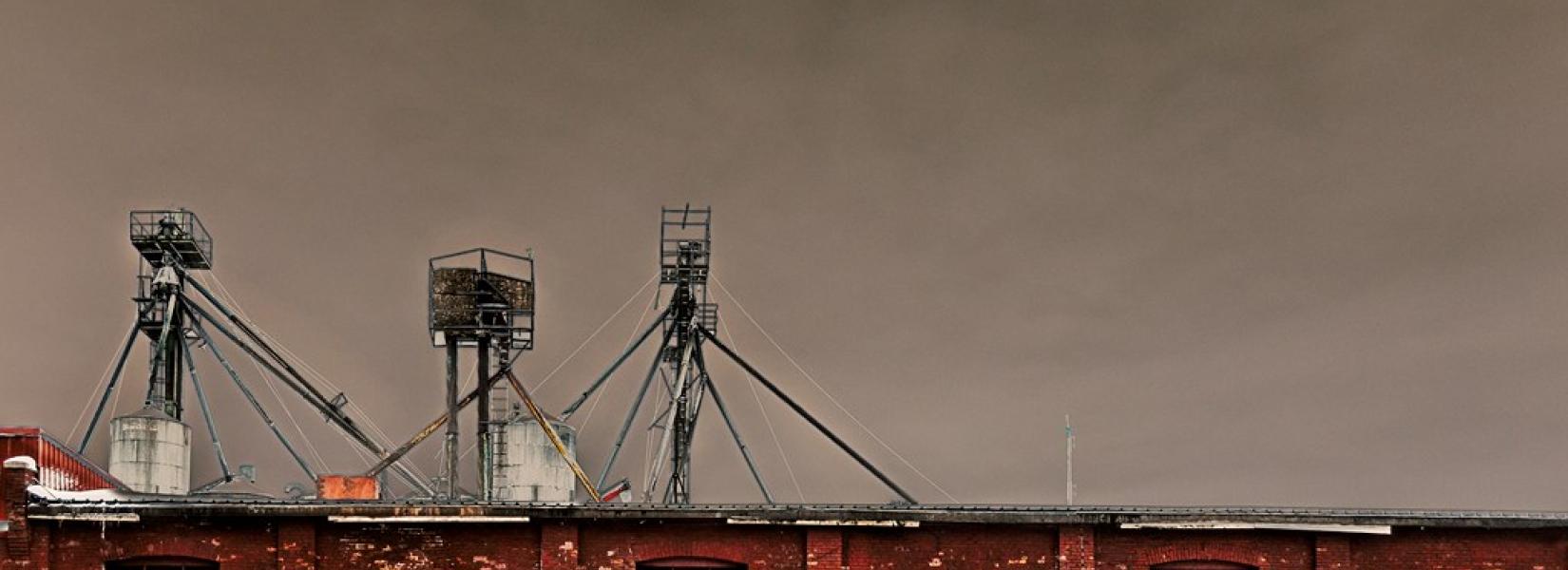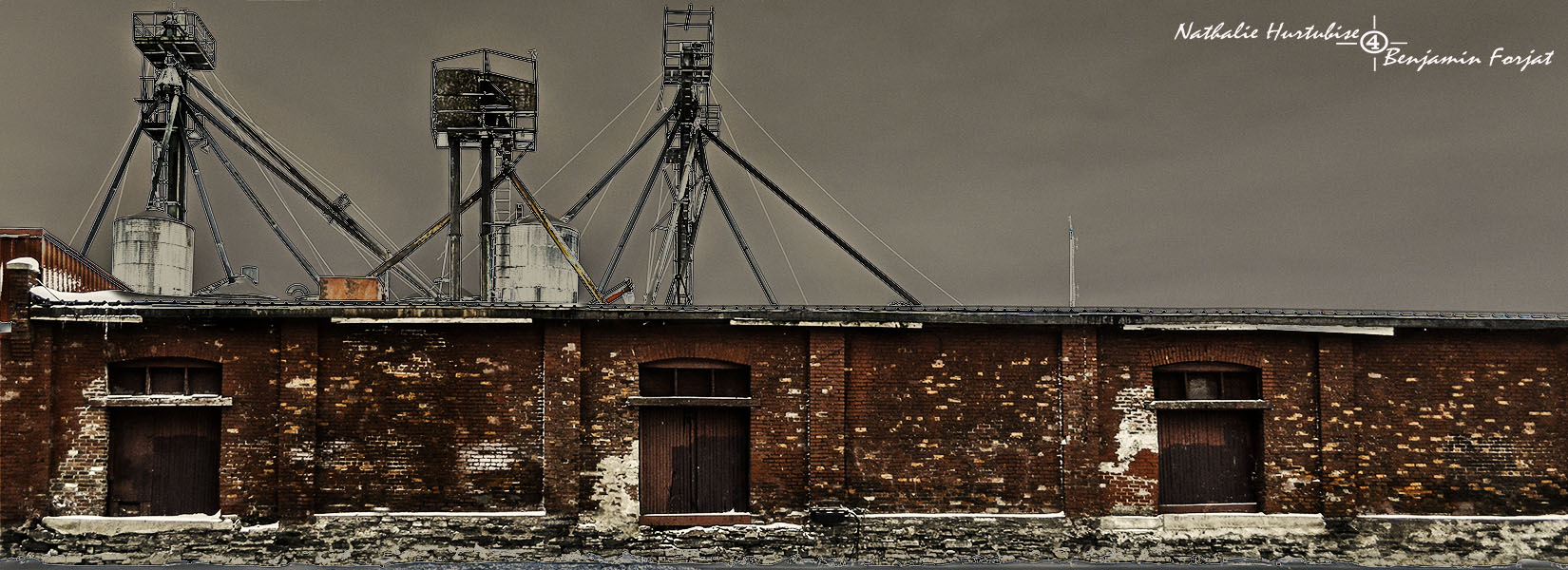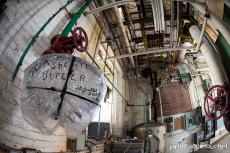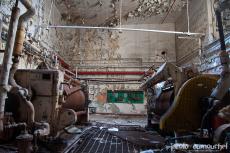For several times I passed by this little factory located in an old industrial area in the Eastern Townships, but I never been inside. Each time, I wondered if it was still active or abandoned. I must say that several tiles were broken, but I was...
Canadian Pacific Railway Freight Office
Trains and Grain
Hochelaga-Maisonneuve has been deeply marked by the train, in its development. Even today, it is surrounded by three tracks : the Canadian Pacific to the west, the now abandoned Canadian National to the east and the one of the port of Montreal to the south.
For the longest part of the 20th century, it was also bordered to the north by the «shop Angus», a vast industrial complex occupying 40 acres of land as well as the «Montreal Locomotive Works», a provider of the CPR, to the east, both now vanished.
The line of the Canadian Pacific Railway (CPR) to the west of the district is the first railway to arrive in Hochelaga-Maisonneuve. It was built in 1876 by a company created by the Government of Quebec, Quebec, Montreal, Ottawa and Occidental Railway (QMO & O). It is at the end of the 19th century that the CPR Freight Office was built, along this track on Moreau Street.
This modest wooden building has been classified by the City of Montreal, in 2007, as «a building with interesting heritage». It is obviously far from the buildings of heritage and architectural interest, exceptional value and large institutional character of the district that must be tightly controlled, as to the construction, renovation and demolition such as the Olympic Stadium, the Maisonneuve Market, the Letourneux fire station and many churches.
This is not so much its architectural quality that gives value to the CPR Freight Office rather than the period of great industrial deployment of Montreal to which it refers and the vital role played by the railways in the economy.
Nevertheless, in 2013, the last occupant, a food wholesaler for livestock farm, pack up and silos were demolished. Early 2014, it was the turn of the CPR Freight Office to go under the wrecker's ball and there remains today no trace of this piece of history in the area.
Related content
I was asked to photograph it (legally) by the Trust group thats restoring the island,which was a life long dream of mine.
The history of the island began in 1900 when Francis Bannerman purchased the island. Located in the Hudson River near...
Although this building was built around 1861, the history of the Dow brewery began nearly 60 years earlier, in 1790, when a farmer named Thomas Dunn started in the beer industry in La Prairie, who was an important stopover for travelers who went...
When I was a kid, I often traveled with my parents and my brothers in Los Santos, the village where I was born. Each time when we approached, my father used to say: "Beware, I will give a penny to the first one who will see the smoke of the plant...



























